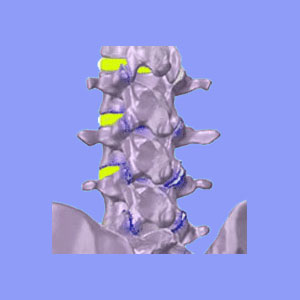
Ankylosing spondylitis sciatica is a very common symptomatic expression of this serious inflammatory spinal disorder. Ankylosing spondylitis is a rare arthritic process which attacks joints and internal organs and is sometimes known as rheumatoid spondylitis or Marie-Strümpell condition. This disease can be debilitating, causing a host of significant health effects and should always be treated by a specialist to ensure best results.
This dialog will provide details on how ankylosing spondylitis can enact lower body radiculopathy symptoms. We will also provide some valuable treatment advice for patients who suffer with AS.
Ankylosing Spondylitis Sciatica Issues
Ankylosing spondylitis, like other rheumatoid processes, is a very mysterious disease that can enact devastating effects in patients. The condition has a variety of profiles and symptoms ranging from mild to catastrophic. Some of the typical symptoms include, joint pain and limited mobility, nerve pain, including sciatica, joint fusion and bone degeneration, organ failure, especially of the kidneys, lungs, heart and eyes.
The disease can strike rather suddenly, but usually entails a gradual progression of symptoms and effects over a 10 year span. During the active growth phase of the disorder, symptoms are likely to escalate and diversify, but once the condition goes dormant, the patient is likely to stabilize. Most cases follow this clinical profile, but some continue to worsen until the patient is completely disabled.
Sciatica from Spondylitis Facts
The most common location for severe ankylosing spondylitis is the lumbar spine and sacroiliac joints, although it can strike anywhere in the body. Sciatica from ankylosing spondylitis can result from bone on bone contact, pinched nerves, spinal instability, SI joint pain or a number of other potential sources.
Spondylitis sufferers often stiffen up and lose the normal curvature in their spines. Some may gain exaggerated curves in some areas and lose all curvature in others. This spinal metamorphosis makes vertebral fractures commonplace and for bad instances of spondylitis, spinal surgery is usually performed. This treatment is usually accomplished by spinal fusion including the use of large scale reinforcing hardware which is likely to be permanent.
Medical science has found some success using a variety of drugs, but they have still not found a cure for ankylosing spondylitis.
Ankylosing Spondylitis Sciatica Guidance
Sciatica from ankylosing spondylitis is an unfortunate effect for those patients who have this autoimmune condition in the lumbar and sacral regions. Often, this pain can be the very worse of the symptomatic expressions and might make patients less active and functionally restricted. This, in turn, will allow the disease to progress faster, leading to a vicious cycle of symptoms.
Physical therapy is crucial for spondylitis sufferers, although it can be a painful and humbling process to be sure.
Remember to be very careful about the types of pain drugs you subject your body to with spondylitis. The disease can easily attack the organs, which are likely to suffer from side effects of the drugs, as well. This can cause permanent organ failure or even death. Unfortunately, many sufferers find this out too late. Let’s hope and pray that medicine finds some clue to cure ankylosing spondylitis and help the poor souls who must endure this brutal disease.
Sciatica > Sciatica Causes > Ankylosing Spondylitis Sciatica




